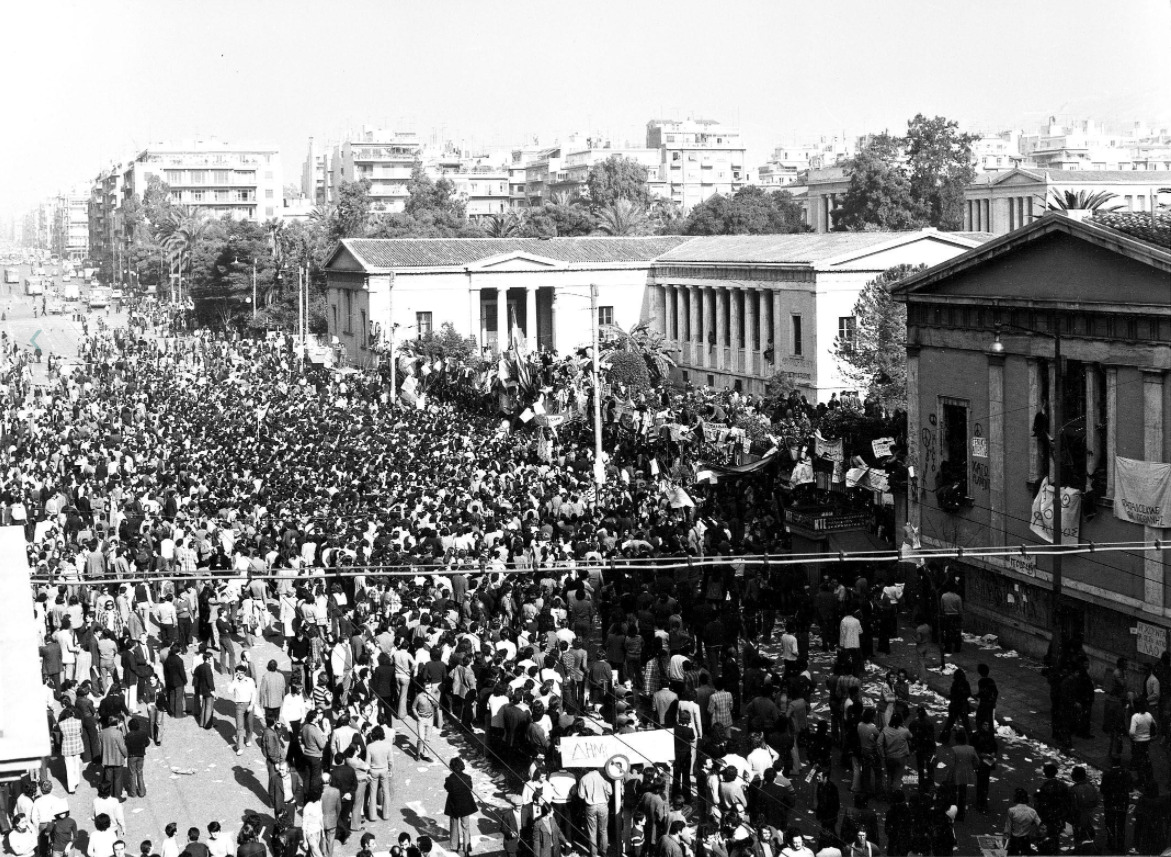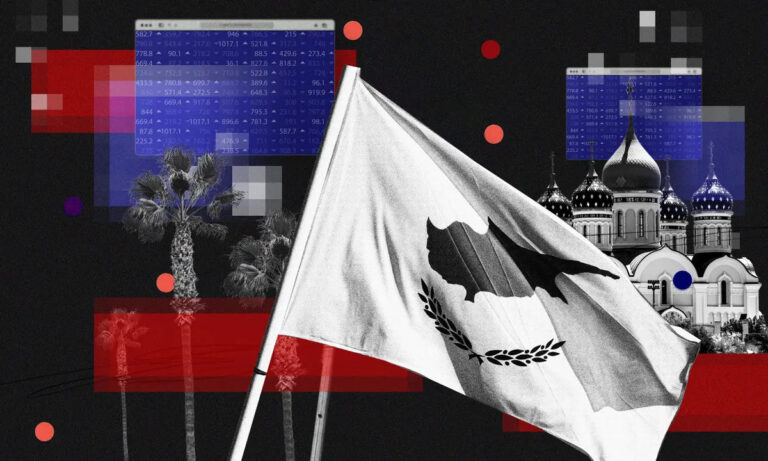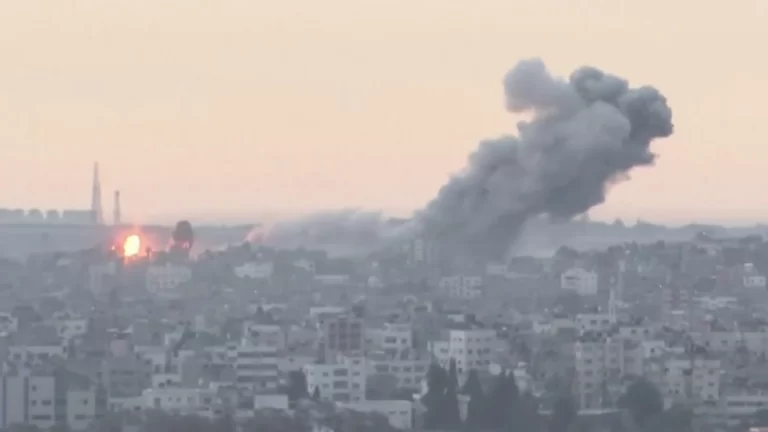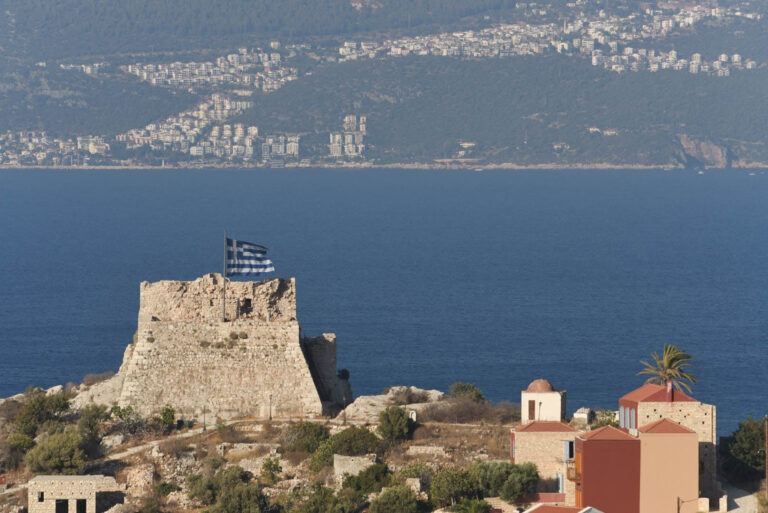The Athens Polytechnic uprising anniversary on November 17 against the military dictatorship in Greece has lost its glow and it is often marred by clashes between police and extreme left groups. In November 1973, it had been six and a half years since Greece was placed under strict military rule. Opponents of the junta who took over in the April 21, 1967 coup were tortured, jailed, exiled, or under surveillance.
The referendum that elected dictator Georgios Papadopoulos as President of the Republic and Spyros Markezinis as transitional Prime Minister in October, and the promise of elections to be held in February of 1974, could not appease the Greek people who wanted their freedom.
Greek students began the first demonstrations, in February and March of 1973. On November 14, 1973 students demonstrated at the School of Law and entered the Polytechnic School (Polytechneio) building on the corner of Patission and Sournari Streets, about 100 meters away from the National Archaeological Museum of Athens.
By evening, police asked them to leave the premises and the students decided to occupy the Athens Polytechnic building. By word of mouth, more people heard about the uprising and joined the group at the school. A pirate radio transmitter was set up and a call went out, inviting all Greeks to come to the Polytechneio and protest against the junta.
Behind the microphone was 21-year-old student Maria Damanaki. The repeated phrase “Polytechneio here! Polytechneio here! This is the radio station of the free, fighting students, of the free, fighting Greeks!” still echoes eerily in the minds of those who heard the announcements in those strange, ominous days.
By Friday, November 16, the Athens Polytechnic and the surrounding area were packed with people who went to protest. Some had gathered out of curiosity since it had been years since demonstrations were allowed. Police surrounded the area, stopping the influx of people to the building.
The authorities started calling on the crowd to disperse and threatened them with violence. Tension was high and there were reported shootings and killings of people by the police.
By nightfall, all the protesters moved inside the Polytechnic campus and the authorities decided to call in the army. By 1:30 AM a tank stood menacingly in front of the gate, with police repeating the calls for people to come out of the Polytechnic building and disperse, but the students and the rest of the protesters did not budge.
The tank crashed the gate of the Polytechnic campus at about 3 AM, and some grainy footage shot by a Dutch reporter shows the vehicle tearing down and crashing through the main steel gate as people still clung to its railings.
From inside the building, the radio announcer was pleading with the soldiers to not carry out the orders of their superiors and hurt their “brothers”, his voice emotional as he recited the national anthem before the tank entered the yard and the transmission ended.
The army and police let all protestors inside the Polytechneio leave unharmed from the Stournari Street gate. The next day the dictatorship announced that no students had been killed once the police entered the Athens Polytechnic, but reports lingered of 24 dead outside the campus itself.
On November 25, just days after the Polytechnic uprising, brigadier Dimitrios Ioannidis staged a coup overthrowing Papadopoulos and Markezinis. The new dictator established an even more harsh regime which ended several months later upon the failed coup attempt in Cyprus that brought the Turkish Invasion to the island on July 20, 1974.
Athens Polytechnic commemoration marred by violence
The Athens Polytechnic uprising commemorations after the restoration of democracy were to be a grand celebration of democracy. However, the November 17 anniversary was soon marred by the divisive politics that brought the Civil War less than 30 years later.
After the restoration of democracy, Konstantinos Karamanlis, the winner of the first post-dictatorship elections, in a grand gesture for the unity of Greeks, legalized the Greek Communist Party (KKE) that had been outlawed after the Civil War. On the first Polytechneio anniversary, the slogan “EAM-ELAS-Polytechneio” marked the rally, claiming the students’ struggle as a struggle of the Left alone.
The KKE at the time was funded generously by the Soviet Union and there was plenty of money for propaganda. Soon, all the Polytechneio heroes were claimed by KKE, as if the only people who didn’t want the dictators were the KKE members and other leftists.
Maria Damanaki, representing the Greek Communist Party, was elected MP. KKE propaganda had arbitrarily divided Greeks to leftists and junta sympathizers as if there were no people standing on middle ground.
Up until the late 1990s, the highlights of the Athens Polytechnic commemoration day were laying wreaths at the school gate that stands as a monument in the campus yard, followed by a rally culminating outside the U.S. Embassy with the shouting of anti-American slogans — because of CIA support of the colonels — and the occasional clash with the police.
By then, the Greek people had seen many people proclaiming themselves as the Polytechnic heroes, capitalizing on their professed “fight against the junta”. They saw hardcore leftists selling out and becoming rich capitalists, discovering that some anti-junta heroes had actually done business with the dictators during those seven years.
Even Maria Damanaki started as a KKE parliamentarian, then moved to the more conservative left, then to PASOK, and then to the European Commission. She is one of the many rebellious youths of Greece who ended up serving the establishment as years passed.
In part due to the appropriation of the Polytechneio struggle by the Left, in part, because people were less interested in politics in the “roaring”, affluent 1990s, and in part out of sheer boredom, the November 17 celebrations waned. Year by year, participation in the rally was diminished to just a few thousand people, with the vast majority of them being KKE members, including KKE youth.
After the tragic killing of Alexandros Grigoropoulos by police in December 2008 and from the 2009 commemoration day onward, the Polytechneio rally and related protests became the starting point for mindless destruction, vandalism and violence by anarchist groups.
News reports on November 18 were essentially damaged logs and accounts of injured police officers. Fewer and fewer people participated in the Polytechnic commemoration day each year. Even politicians started to snub the wreath-laying ceremony in the campus courtyard. Every year there are fewer and fewer people.
In addition, the economic crisis has reminded Greeks that there are more important things than politics and that political colors are not exactly what they appear to be. Greeks endured a harsh, crippling recession with the conservatives of New Democracy, the socialists of PASOK and the leftists of SYRIZA.
They saw that in their everyday lives during the years of crisis, whoever is in power — left, center, or right — the bread on the table is always meager. The ideals of the Athens Polytechnic uprising are not very important to them at present. The average Greek citizen knows what to expect on November 17: anarchists clashing with the police, firebombs, destruction of public and private property, injuries to policemen, and hollow statements by politicians.
Half a century later — and Greeks find that the meaning of November 17 has been lost behind the smoke of Molotov cocktails, antisocial sloganeering, and general apathy.
Source: Greek Reporter







